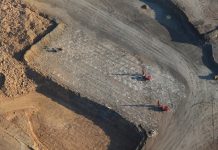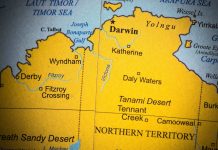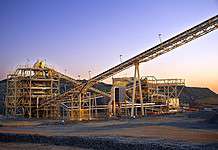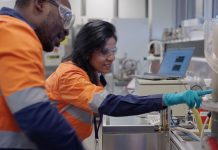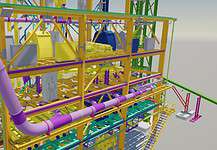DESPITE spending the best part of a decade on care and maintenance, Boddington gold mine is now a contender for the title of Australia’s largest producing gold mine, having produced its 1 millionth ounce of gold. Wholly-owned by US gold miner Newmont Mining, the large open cut mining operation recommenced operations in 2009, following a multi-million dollar construction and expansion project.
Within the Saddleback Greenstone Belt, in an Archaean structure it the southwestern Yilgarn Craton in WA, 130km southeast of Perth, the mine is estimated to have a mine life of 20 years from re-opening, with a production target of 1 million tonnes per annum.
When the Boddington mine began operations in 1987, it was held in joint venture by Normandy Mining (44.44 per cent), Acacia Resources (33.33 per cent) and Newcrest Mining (22.23 per cent).
By 1997, as the mine approached completion, the JV partners approved a full feasibility study for the Extended Basement Operation gold-copper hardrock resource: an extensive, relatively low-grade primary resource directly underneath the existing oxide open pits. The study was based on a previously completed prefeasibility study.
The first phase of the feasibility study was completed by 2000, including a substantial re-evaluation of the crushing and grinding circuit as the originally proposed conventional SAG mill circuit would not generate a sufficiently positive economic outcome.
In 2001, Newcrest reported that the mining and processing of oxide resources at Boddington had ceased. In 2002, Newmont took over Normandy and acquired its share of the project, while AngloGold Ashanti purchased Acacia’s interest.
In August 2003, the JV parties decided the feasibility study needed to be updated. According to AngloGold, the update of the study pointed towards a larger project with greater throughput, higher annual gold production and a longer mine life.
This larger scale would reduce the impact of increased operating costs in the region resulting from the minerals boom. Environmental approvals associated with the expansion as defined by the 2000 feasibility study were received in June 2002, and would remain valid for five years. In 2004, AngloGold reported that site works undertaken during the year while the mine was under care and maintenance included minor rehabilitation, plant preservation, exploration and assistance with test work for the feasibility study update. It said that capital expenditure during the year amounted to $3 million. Newcrest announced in August 2005 that it was considering the divestment options available for share of the project as it wished to concentrate on its wholly and majority-owned projects.
Newmont took this opportunity to secure further interest in the project and finalised the acquisition of Newcrest’s project share for US$225 million in 2006, giving it a controlling 66.6 per cent
By Rachel Seeley

